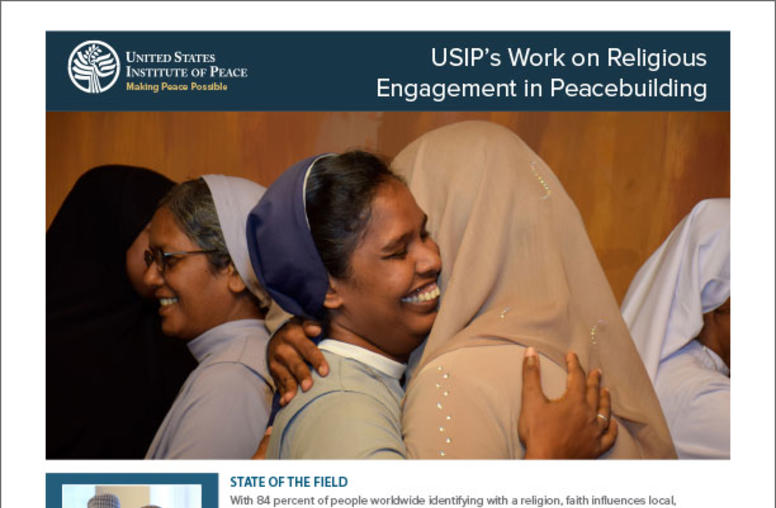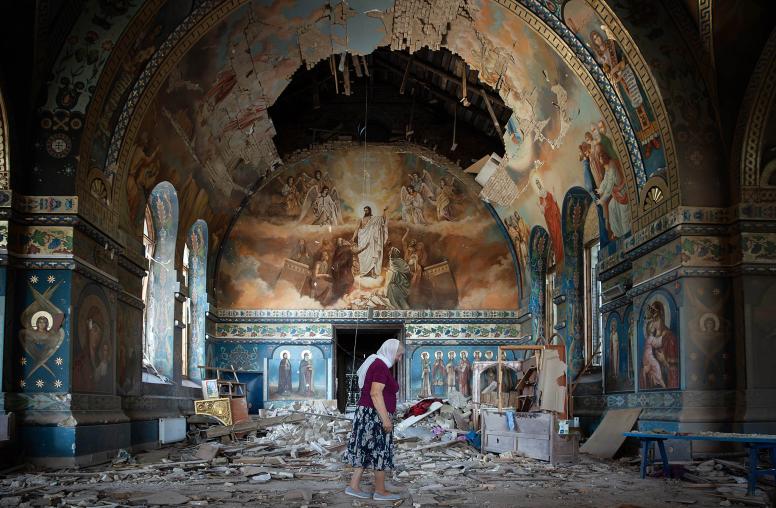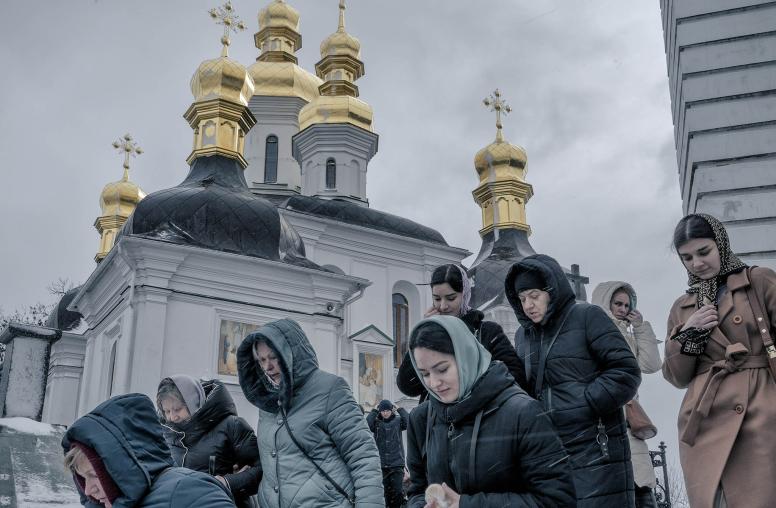How the Catholic Church Can Bolster Alternatives to Violence
As the Vatican Considers a Shift on “Just War,” Nonviolent Action Could be Key
The Catholic Church, with its 1.2 billion adherents worldwide, has been pivotal in some of the most significant nonviolent struggles in modern history. Many will recall the iconic image of Filipino religious sisters confronting military forces and a kleptocratic dictatorship of Ferdinand Marcos in prayerful resistance during the 1986 “people power” revolution. Today, Filipino religious leaders, facing another violent dictator, Rodrigo Duterte, once again are the leading face of nonviolent resistance. The Vatican is discussing these and other examples of powerful nonviolent movements as it rethinks its long-held doctrine of “just war.”

In his 2017 World Day of Peace address, Pope Francis pledged “the assistance of the Church in every effort to build peace through active and creative nonviolence.” Some experts saw the statement as a signal that the Church is considering altering its doctrine that empowers rulers to wage war only as a last resort to confront grave wrongs. Even proponents of just war acknowledge that the doctrine’s principles of “right cause” and “last resort”, used to justify military intervention, are often not applied rigorously. There is an over-emphasis on the military option at the expense of other, nonviolent options. The result is under-investment in the latter. For that reason, Church leaders are increasingly emphasizing a different paradigm oriented around “just peace”.
Just peace, a concept with strong interfaith backing, is grounded in the notion that peace is sustainable when it addresses the underlying injustices and exclusionary policies that fuel grievances. It recognizes the power of nonviolent methods to disrupt unjust systems and to resolve conflicts.
The effectiveness of nonviolent options—including civil resistance, dialogue, mediation, negotiation, unarmed civilian protection and transitional justice—is grounded in the skills and legitimacy of those using them. The Church, from the Vatican down to local communities, can play an important role in advancing just peace globally by building strategic and tactical bridges between grassroots nonviolent action and peacebuilding.
Practically, this can be done several ways. The Church can support training and education in the full menu of nonviolent options and their strategic applications in parishes and on university campuses, as they have done in the Philippines, Colombia, Israel and Palestine. During the 1986 revolution in the Philippines, priests and nuns, in partnership with the International Fellowship of Reconciliation, trained their communities in nonviolence and nonviolent action, paving the way to a peaceful end to the Marcos regime.
Inter-Religious Movements for Peace
Investing in inter-religious initiatives and field-based programming with conflict-affected communities is another powerful step the Church can take. In 2001, Sister Marie-Bernard Alima created the Coordination of Women for Democracy in Peace, a civil society network organizing women peacebuilders in the Democratic Republic of Congo to promote human rights, transitional justice and trauma healing for victims of sexual and gender-based violence. Similarly, in South Sudan, where post-independence civil war and a dictatorship have created a humanitarian crisis, the inter-denominational South Sudan Council of Churches has developed and issued an Action Plan for Peace focused on dialogue and reconciliation. Peacebuilding efforts in South Sudan might benefit from greater focus on nonviolent mobilization and “people power.”
The Church can continue to play an active role in transitional justice and reconciliation after conflict. In Chile, the Church advocated for the country’s Commission on Truth and Reconciliation following Pinochet’s removal from power in 1990. The Chilean commission helped inspire the South African Truth and Reconciliation Commission shepherded by Archbishop Desmond Tutu.
At the higher levels, the Church can employ diplomatic pressure to hold political leaders accountable. During the Polish Solidarity movement in the 1980s, Pope John Paul II, with local priests and nuns, famously stood shoulder-to-shoulder with the worker‐led movement that challenged Communist tyranny with nonviolent resistance. The Vatican Secretary of State and Holy See missions to the United Nations in New York and Geneva can use existing initiatives, like the Sustaining Peace Resolutions and the Sustainable Development Goals, to advance just peace approaches and tools.
Church Pressure on Military Forces
Church leaders also can communicate with government officials and security forces to deter violent crackdowns against peaceful activists. This might include working with the military to support unarmed peacekeeping pilots in places like Syria and South Sudan. In addition, Church officials could encourage military leaders in the U.S. and partner nations to use training, funding and education to strengthen governance in partner defense institutions, and to deter repression and human rights abuses. A guide written by former Director of National Intelligence Dennis Blair, a retired U.S. Navy admiral, shows how this could be done in practice.
Logistically, the Church also can provide safe spaces in places like the DRC, South Sudan, Venezuela and Cambodia, where activists and peacebuilders can meet, strategize and plan actions. It can offer small resources and transportation for those forced to operate in restrictive environments, often with little or no money. It can also work with Catholic and other private foundations to support flexible grant-giving that contributes to just and sustainable peace.
A papal encyclical on nonviolent action and just peace, building on Pope Francis’ Peace Day address, would help focus the Church’s energy and resources on all these options and bolster its global work to advance alternatives to violence.
This post is an excerpt from Stephan’s keynote address for the University of San Diego conference: “‘The Catholic Church Moves Toward Nonviolence? Just Peace and Just War in Dialogue.” You can find the full address here.



